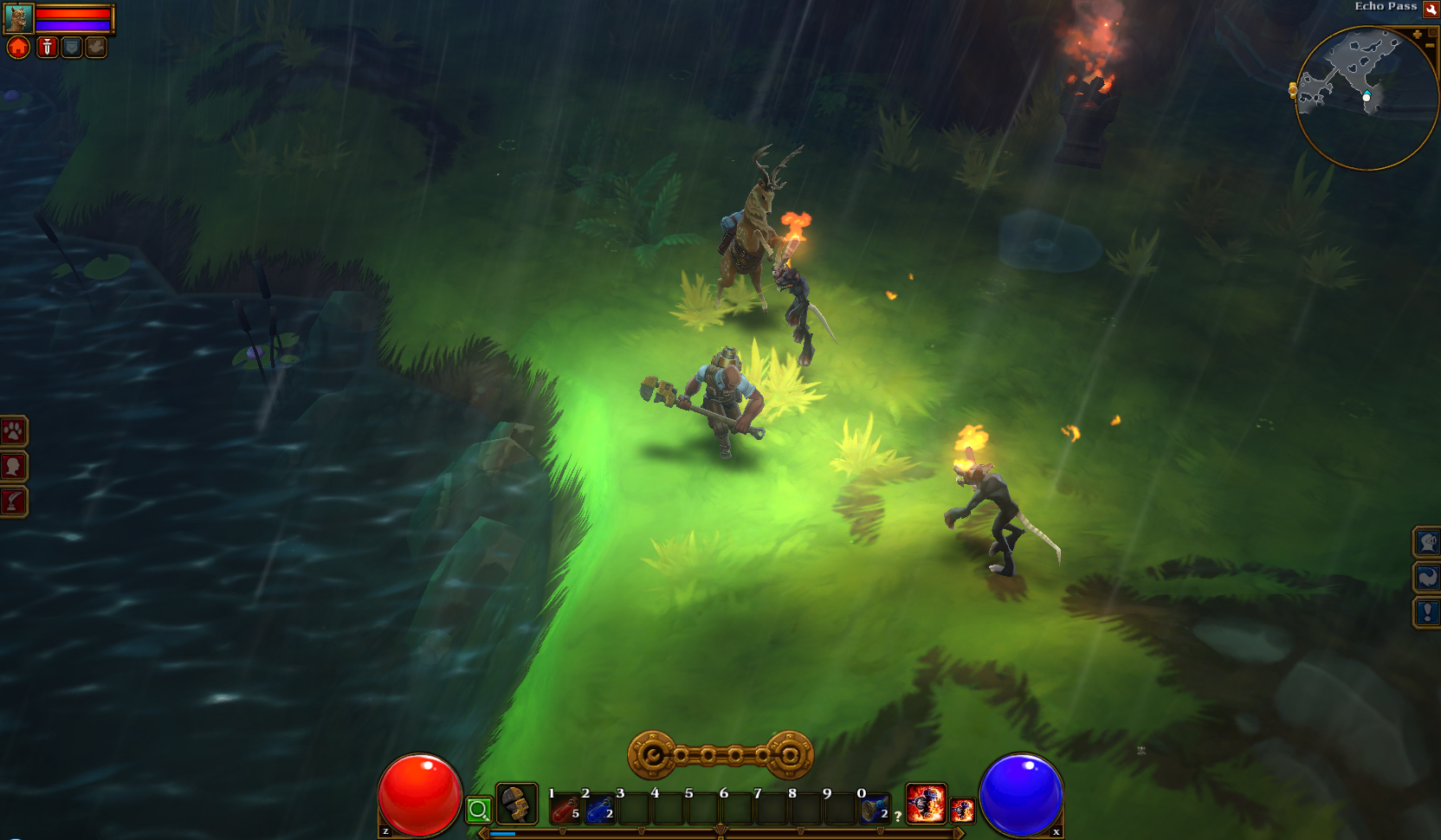Bit of a backstory, me and a friend were always gamers and Ultima Online fans, played for ages.
We always talked about if someday we did a game like it how we'd do it and well, now it's our little (lol) project.
I know i've heard and read all the dontwasteyourtimewithmmorpgs and i agree with pretty much all of it, the reason we're doing it is basically for fun and something to do with our free time.
So if you don't know Ultima Online it was one of the most played mmorpgs ever, and imo the best one ever. It is a isometric 2d view rpg with heavy PVP action.
So after we discussed a lot about the game and such we started going around tackling each small thing (we actualy have nothing yet, just a bunch of ideas) at a time and read a bunch of tutorials and stuff on how to do most things.
I began thinking about textures and stuff, how we'd like the game to look etc, so i decided to try doing some terrain textures and see how that looks, so i began looking for all kinds of tutorials.
This is a picture of one of the terrain (grass) textures UO uses the most:

(sorry for using paint to edit these, its just faster)
After trying to follow a bunch of tutorials on terrain texturing,and failing miserably (most of them were showing artifacts, a lot of patterns, etc), my buddy made a program to test the texture and told me i needed to do them 64x64 (i was basically doing them huge as most tutorials did, also we realized that we might even need to do them 32x32), and even tried a few free textures and they looked nice (seamless and no artifacts):

I'll try and attach these and all the other texture files in the end.
This one is seamless but the problem with it was that you can actualy distinguish a tile from another, you have those patterns that are easy to see. It's very important that the terrain textures (not city/house floors etc, actual terrain) are not noticeable, as you can see in the first UO pic. After looking more and more for tutoriais and stuff about this problem (i couldn't possibly be the only one ever to experience this), i found some guy with a similar (not the same) problem and someone posted a texture in his topic. Aparently the texture was made in blender but the thread was old and had no more responses after that. I ended up trying it and i had very good results:

Now this one, although still a bit noticeable, was good. This is sort of what we're looking for. The thing is, its not ours, and i don't know how to make something like it (the file, which will be attached, is like a pixel art because of the small size). The color is exactly what we had in mind and it really looks like grass, but you can still see some connecting lines between tiles (it looks like a puzzle if you pay close attention).
What i need is someone to help me figure out how to do that in the above imagem, but also improve it and make it my own. Every one i try to make in photoshop ends up having patterns wherever the detail is (i can't simply use a green background), and mostly doesn't even look seamless and gets a lot of artifacts.
Here are a few screenshots from UO to showcase a bit more what i need:

This is the same grass texture with another type of grass texture inbetween and a dirt texture (there are transiction textures to all of these, i'll attach one).

More from the second grass texture.

Snow texture.
As you can see, in all these pictures you can't really notice the tile (which is the goal). You may see the pattern but the important thing here is to not notice when a tile begins and another one ends.
We also really like the Torhclight2 graphics, specially the terrain (we really want something that seems more drawn/hand painted than what we have in UO, but ultimately we just need unoticeable tiles).

So, can i get some help? Any help is apreciated (links to tutorials, actual direct help on doing them, etc).
I'm new to the community and definitely looking forward to be an active member!
edit: Sorry in advance if my formatting is bad or out of line, please let me know. Like i said, i'm new! Thanks!
edit2: The Files!
[attachment=22692:uotext1.jpg][attachment=22693:uotext2.jpg][attachment=22694:uotext3.jpg][attachment=22695:tile.png][attachment=22696:asdz.jpg][attachment=22697:1.png]

















